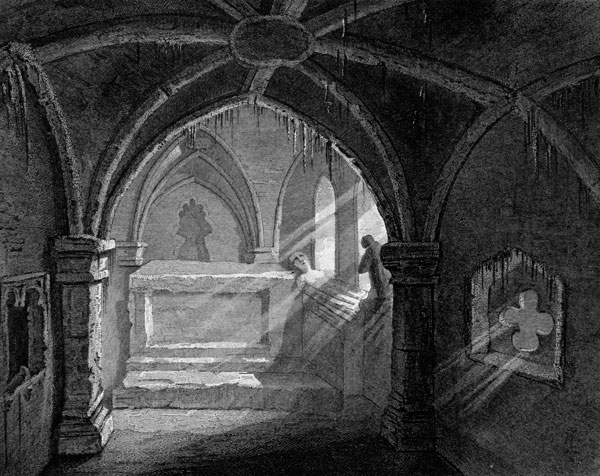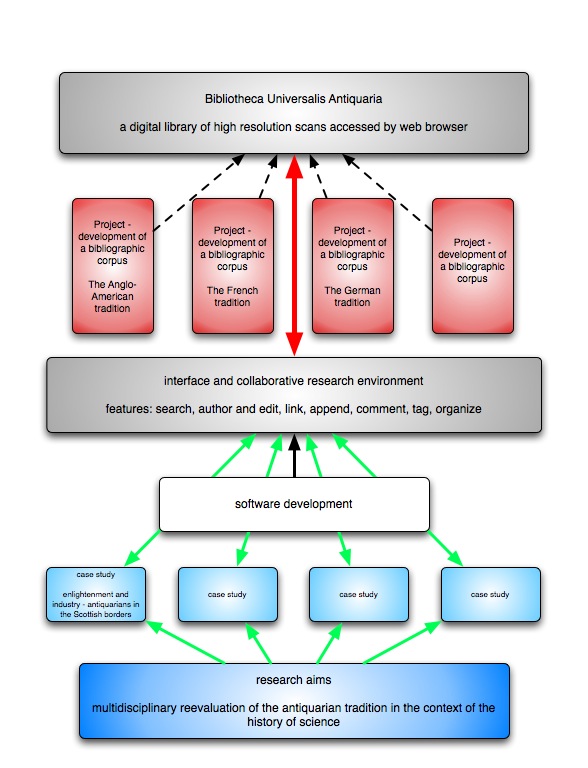Topic: the antiquarian tradition
Up to the nineteenth century antiquarians were in the forefront of the study and reception of the past. They dealt in ruins and remains; they made collections, whether of art, coins, or of everyday phenomena; they brought coherent system to the material remains of the past. The antiquarian tradition in Europe was at the heart of enlightenment debates about the rational study of the past. Antiquarian publication pioneered mapmaking and the illustrated book. The antiquarian tradition is a global phenomenon; we are beginning to appreciate common cultural features in the treatment of the material past. Yet antiquarianism is now most often seen as a predisciplinary field, superceded and outmoded by archaeology and historical geography, ethnology, museum studies and collection management, information science. It is also a neglected field of research. This project aims to reevaluate the antiquarian tradition.
We are particularly investigating the proposition that the antiquarian tradition in early modern Europe (roughly 1500-1820) has been misunderstood because of the difficulties of the multidisciplinary research required to understand such a field. More specifically, we aim to explore the hypothesis that the antiquarian tradition was not an intellectual backwater to the mainstream development of experimental science, but was a key component of predisciplinary scholarly scientific production.

Warkworth Hermitage UK - see chorography
To achieve these aims the project will develop a digitally-enabled multidisciplinary and international research network with a unique and innovative structure:
One. Published sources within the global antiquarian tradition will be gathered in the Bibliotheca Universalis Antiquaria (BUA) - a digital library of high resolution scans. The library is being built by separate groups of scholars coordinated by myself and especially by Alain Schnapp in Paris. One is devoted to the French language tradition; Anglo-American-Antiquarians is another working on sources in English. The institutions directly and currently involved in this effort are Stanford University Libraries, Brown University Library, Cambridge University Library, INHA (Institut nationale d'histoire de l'Art), the Bibliothèque nationale de France and the Wolfenbüttel Library in Germany.
Two. Collaborative Research Environment Access to the high res scans of books and sources in the BUA will be via collaborative participatory software. This will offer the following functions to users of the library: intelligent search, comment and annotate texts, author and edit pages, link, append, tag, organize pages and works in the collection. Such an environment is designed to facilitate the work of dispersed and diverse research networks as well as to augment the BUA with related primary and secondary materials, discussion forums and research publication.
Three. Case Studies exploring the antiquarian tradition in local and historical contexts. Using the digitally enabled research environment (One and Two above), these projects will address specific research questions. They will also question the coherence and definition of the antiquarian tradition, adding specific sources, published and unpublished, to the collection (eg imagery, related important works, unpublished correspondence and papers). The research environment and projects will thus provide an iterative and evolutionary dynamic to the definition of the antiquarian tradition: new research will inform the development and expansion of the collections of the BUA. I am particularly interested, for example, in antiquarian activity in the borders bewteen England and Scotland, up to and including the Scottish Enlightenment.
Four. Publication The project will deliver conventional academic publications, including two edited books on the antiquarian tradition, as well as publication arising from the case studies. There will also be two conferences to discuss the projects' findings. The Getty Foundation, for example, is supporting the project with a year of visiting scholars at the Getty Villa (2009-2010 coordinated by Schnapp), a conference and a book.

Anglo-American-Antiquarians - the project to collect the English language sources for BUA - with specific research questions and outline of case studies
http://documents.stanford.edu/antiquarians/Home - mock up/demo of BUA
http://www.humanitiesnetwork.org/groups/antiquarians/ - the dedicated project wiki
 BUA-project-diagram.graffle - the summary project diagram (above)
BUA-project-diagram.graffle - the summary project diagram (above)
 BUA-France-Stanford.doc - an application for funding (successful) to the France-Stanford Center for Interdisciplinary Study
BUA-France-Stanford.doc - an application for funding (successful) to the France-Stanford Center for Interdisciplinary Study
Antiquarians - project outline 10-2007 - an application for funding (successful) to Stanford Humanities Center
Landscape, Archaeology, Chorography: encounters in the Scottish borders. A talk at Brown University, December 2006. Here I connect new ideas about media as mode of engagement (see below) with regional and landscape archaeology - sketching out deep-mapping as a project in a contemporary chorography, that old antiquarian genre.
Media as modes of engagement - remarks on antiquarians in the Scottish borders. Society for the Social Study of Science, meetings in Vancouver November 2006. This proposes a rethinking of how media, new and old, work in scientific disciplines, indeed how we understand media generally. The idea of medium as mode of engagement is worked out here.
